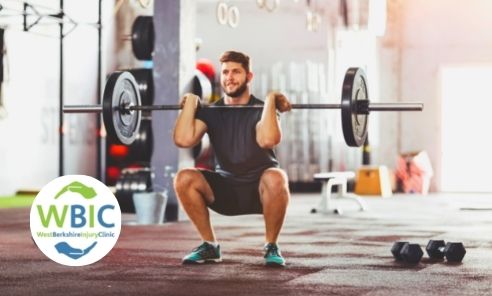All too often in this profession, we see many endurance athletes in the middle of a training block preparing for that 10k, half marathon, marathon, ultra, triathlon, ironman. Training is all going quite nicely, and then bam. Injury strikes out of nowhere.
Quite often, when questioning the athletes about what their training programme looks like, it all follows a familiar pattern.
“My warmup is normally a slow first 1km, then a few quick stretches on my calf and hamstring, and off we go.”
“I normally start to get pain halfway through the run or at the end of the run.”
The Benefits Of Strength Work For Endurance Athletes
Strength work – whether at home or in the gym, often gets neglected. Sometimes due to time constraints. Other times, people just aren’t too sure what to do and why it would be beneficial to them. I’ve found a nice blog and videos from the PrehabGuys which summarises the benefits of strength work for endurance athletes. Essentially a good bit of strength will provide us the ability to perform repeated tasks.
As you can see from their blog – overall, strength work will help make you a more efficient runner. Whether it looks like you skate or slide in your running stride or if you have a nice knee drive and pick up.
Strength is also vital when you realise how much toll endurance work can take on the body. Studies have shown that your quads absorb and produce up to 4.9 x your body weight during running. In the hamstrings, 4.6 x BW. Calves can absorb and produce a whopping 8.7 x BW. The more we can strengthen and make these muscle groups more robust and resilient, the better. With stronger muscles, the body can produce less forceful muscle contractions to complete the task – which in theory means we are able to perform for longer and with less fatigue.
Compound Exercises
Examples of compound exercises mentioned in the infographic would be things like a squat, deadlift, Romanian deadlift and a split squat. Ideally, we’d train and build to work in single leg as this is a bit more running relevant – you don’t run with 2 feet together!
Plyometric Exercises
Examples of plyometric exercises can be things like pogo jumps, box jumps, A & B marches, A & B skips. Plyos are great for getting an extra spring and bounce into the muscles.
In Summary
Overall – there isn’t really a downside to adding a bit of strength training into your running or endurance training, it can really only give you that extra edge. The key is being able to link the strong muscles to being able to run well. For this, we would look at a set of exercises called co-contractions. Essentially getting more than one muscle group to work at once. This more accurately represents running as, in the ideal world, your quads, hamstrings, glutes and calves will all work together harmoniously to get you through your endurance activities.
How We Can Help
Whether you an endurance athlete or a fun runner if you would like some expert advice on how to incorporate strength training into your exercise programme get in touch – Contact Us

